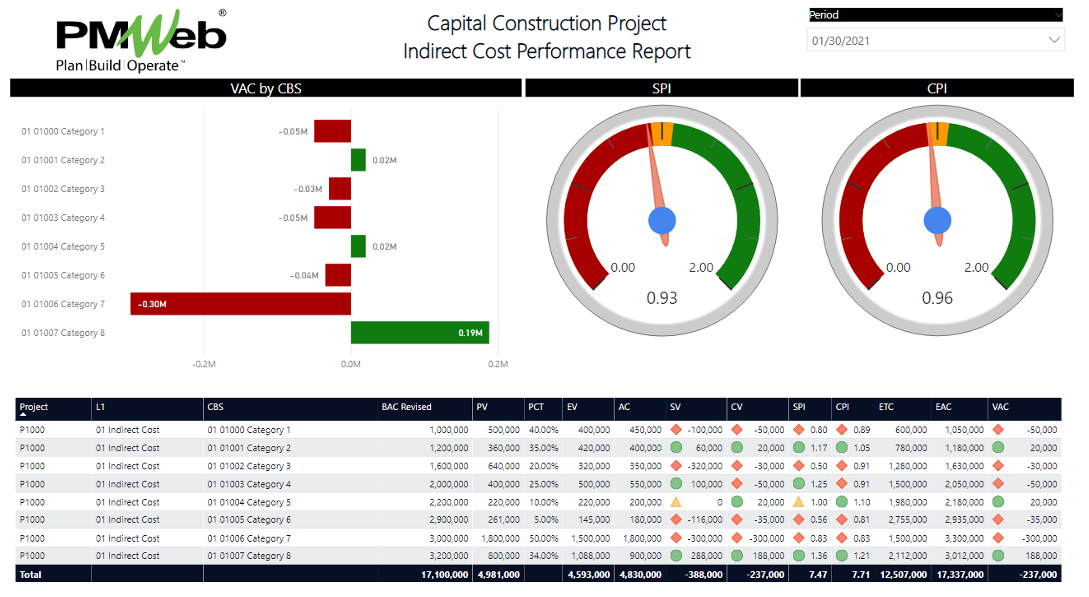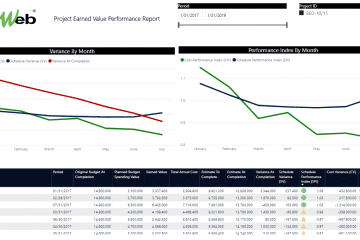Each capital construction project consists of direct and indirect costs. Direct Costs are the costs that are proportional to the project, which would usually include material for products, workers, project managers. Direct Costs are also known as Variable Costs as they vary with project requirements. On the other hand, Indirect Costs: are the costs expended regardless of the size of the project. They include a project management team working on multiple jobs in the office, contract supervision, tools and equipment, temporary buildings, scaffolding, personal protective equipment, quality control, inspection, bonds and insurance, repairs, and maintenance. Depreciation and amortization, project finance, general expenses, among others. Indirect Costs are also known as Fixed Costs, and they do not vary with project requirements.
Although we tend to monitor and control direct costs closely, less attention is given to indirect costs. Like the risks associated with the direct cost scope of work for which they can be managed or outsourced or transferred to other, indirect costs scope of work can also be managed or outsourced. In summary, similar to direct costs, indirect costs also need to be addressed, monitored, controlled, and reported on.
Similar to direct costs, indirect costs need to be adequately estimated. The detailed cost estimate will be associated with the relevant cost breakdown structure (CBS) levels that they relate to. The approved indirect costs estimate they will become the basis for establishing their budget and their budgeted spending plan. The approved estimate will also be the basis for establishing the commitment cost for each category or package of indirect cost, either outsourced or managed by the entity. The commitment cost will also become the basis for capturing the actual money spent on indirect costs. Those actions will enable the entity to manage, monitor, control, and report on indirect costs.
Using a Project Management Information System (PMIS) like PMWeb, the cost management processes of a capital construction project should cover the procedures for both direct and indirect costs. The first step to achieve this requires defining the cost breakdown structure (CBS) for the indirect cost categories, as explained above.
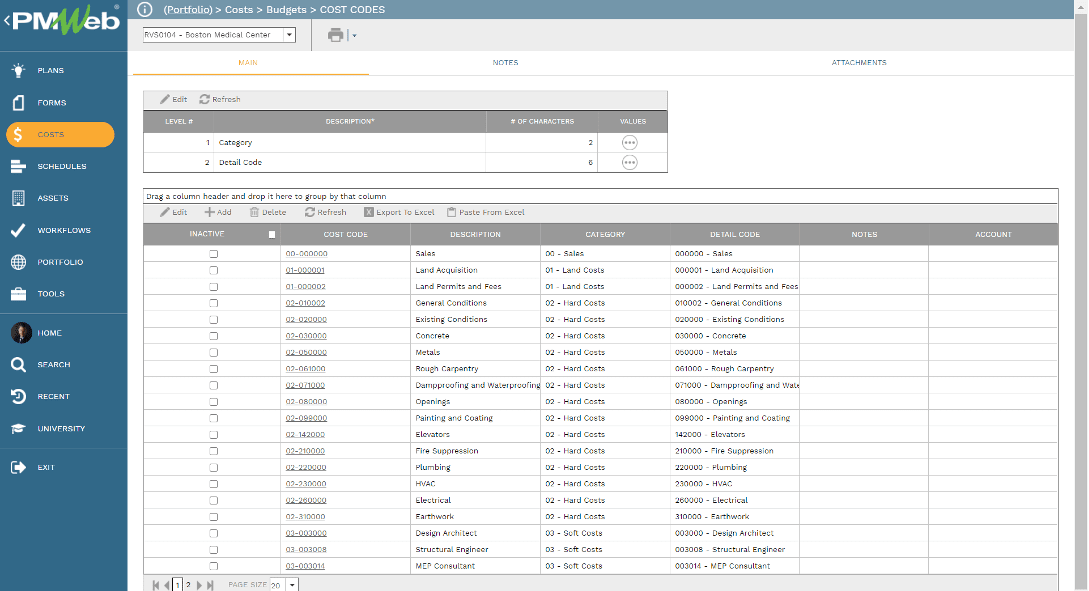
The next step is to use the PMWeb cost estimate module to estimate indirect costs. PMWeb allows creating the cost estimate by using pre-defined cost items like, for example, associated with the site office facilities and labor and equipment resources. There is also the option of importing the cost estimate from MS Excel. When estimating the indirect cost, it is essential to provide the quantity, unit of measure, and unit price for each cost estimate line item instead of lump-sum values. This will be needed when capturing the actual spending of indirect cost.
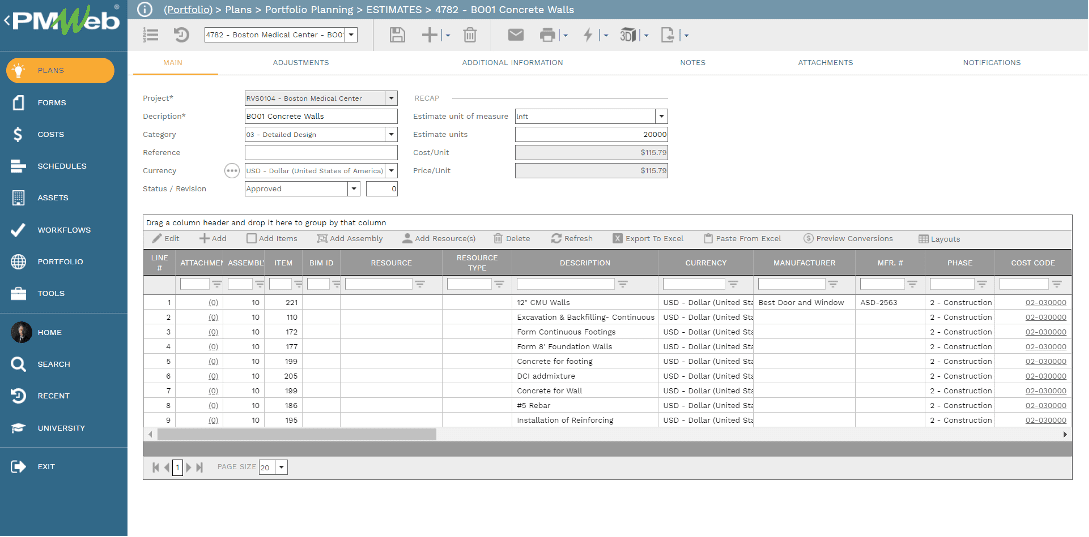
When the indirect cost estimate is approved, PMWeb allows generating a budget request or adjustment. This will be used to append the approved project baseline budget with the budget for indirect cost. This budget adjustment will be posted as the original budget rather than the revised budget. The budget projection option allows defining the projected budget spending line for each budget line item. It is highly recommended to link each budget line item with the relevant project schedule activity. This will be used to calculate the earned value (EV) for each budget line item for which the budget at completion (BAC) and planned value (PV) is already available.

The approved cost estimate will create the commitments for the different indirect cost categories to enable capturing actual spending. Also, it allows creating procurement packages for an outsourced scope of work. For example, for bonds and insurances needed for the project, the entity might ask for proposals from different insurance copies. This will enable the entity to compare and select the best proposals to generate the commitment for that indirect cost category.
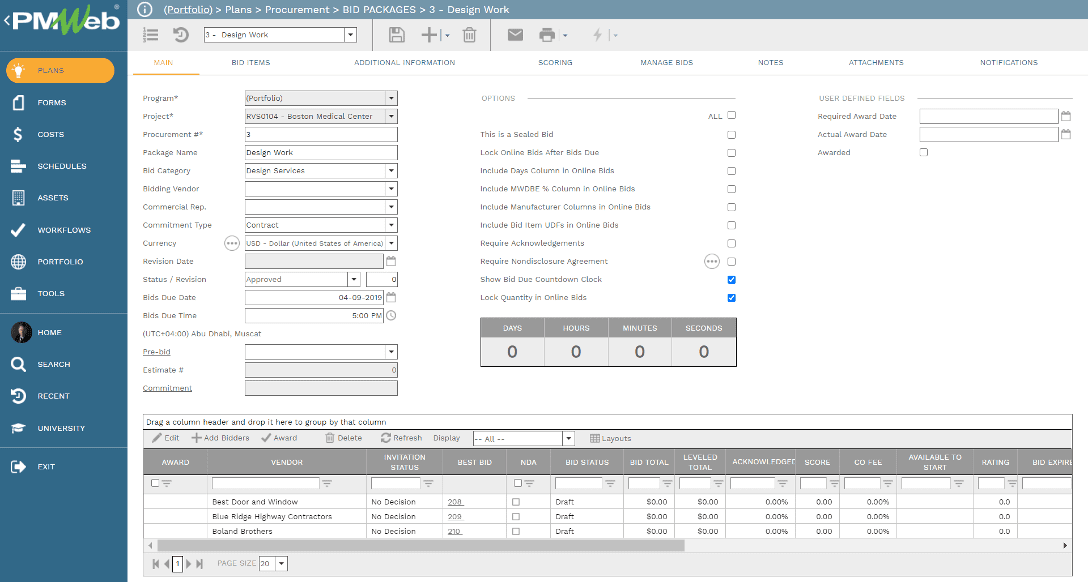
The commitments for indirect costs should itemize all items that need to be managed, monitored, controlled, and reported. For example, the committee will include a line item for each resource for the team working on the project, by name, showing the entire days, weeks, or months allocated to the project and the unit rate for each resource. The unit rate which the corporate office will provide will be inclusive of salary, all allowances, indemnities, among others.
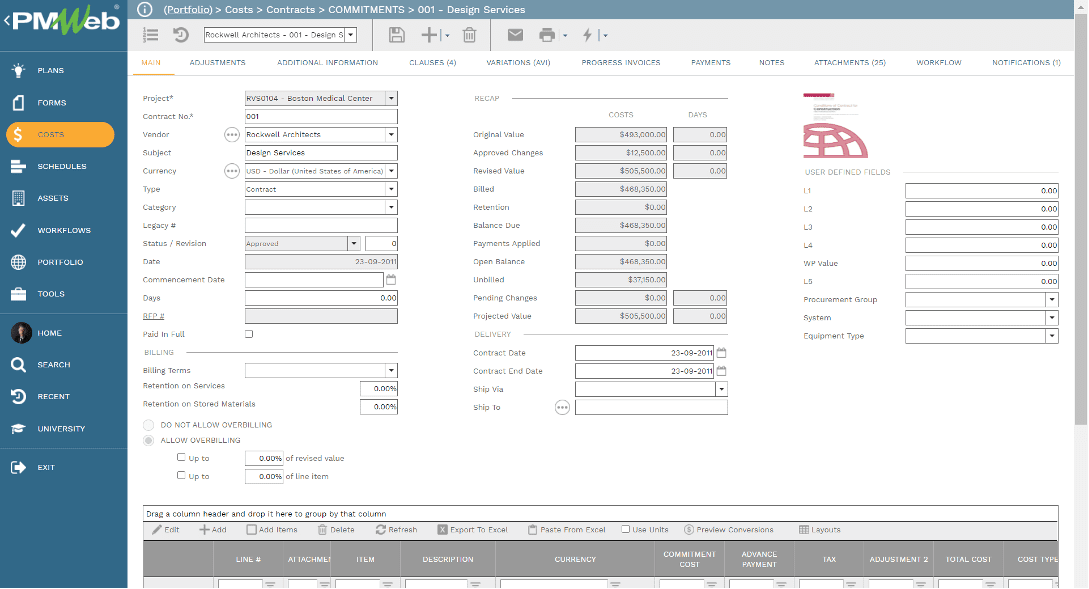
To ensure that the approved indirect cost commitments reflect the predicted total indirect cost when the project is completed, all changes, whether approved, pending, or even expected, should be captured. PMWeb potential change order module can be used as an early warning notification of any predicted changes to what was initially approved. If the review of the possible change order finds that the shift has merit, then a change order will be generated.
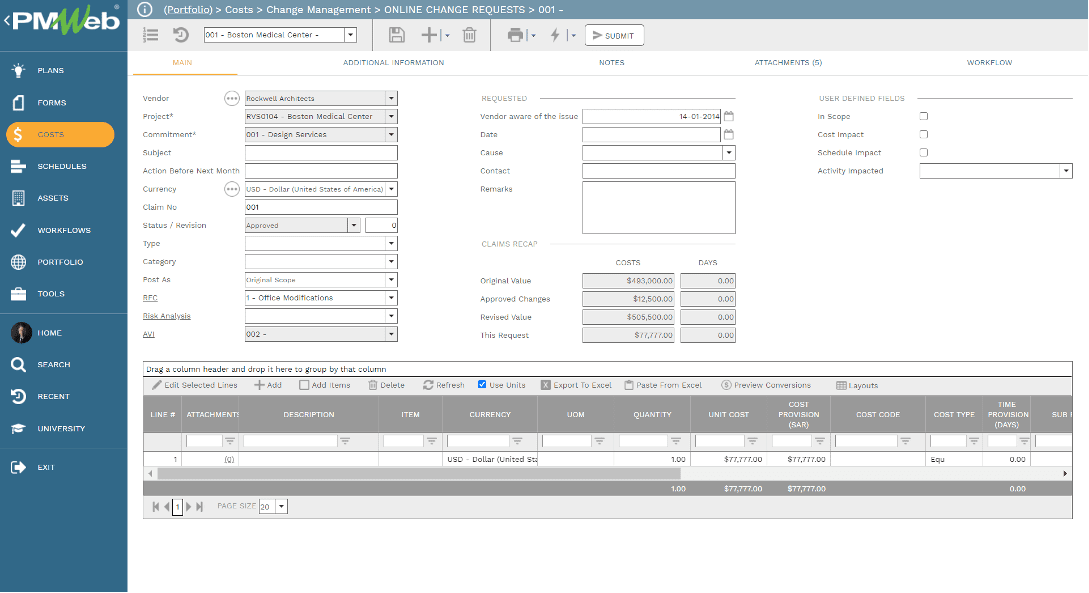
PMWeb, a change order module, will capture, review and approve or reject all changes. Those changes will be initially considered as pending until they are reviewed and approved or rejected. The approved revision will be the basis for having the revised commitments by adding them to original obligations. Projected commitments will be revised commitment plus pending modifications and potential changes that are still not approved or rejected.
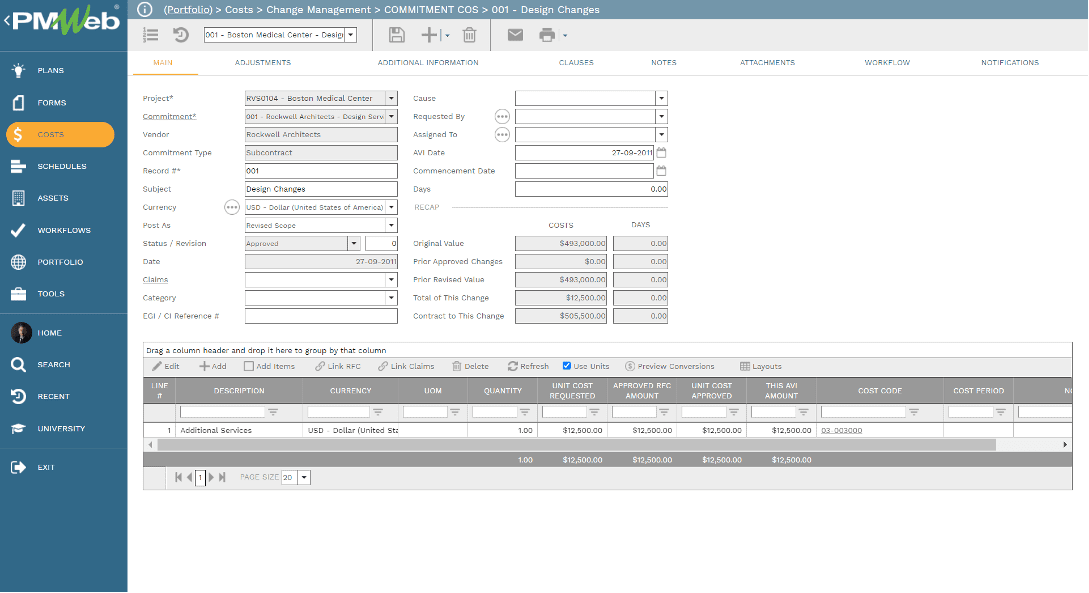
The actual spending of resources and items included in the indirect cost commitments will usually happen daily. The PMWeb production module allows capturing those quantities weekly. Those production forms can be assigned to different individuals to capture actual data for consumed resources and items accurately. Similar to the concept of timesheets, production sheets as generated every week from the past week production sheet.
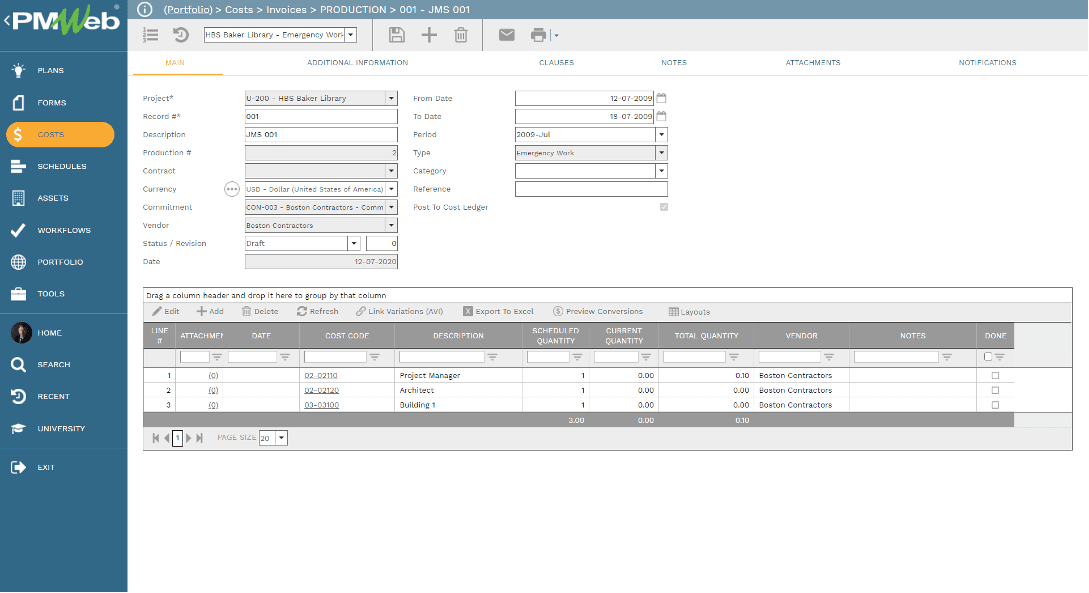
An interim payment requisition will be released every month to estimate the number of indirect costs spent during the period. The actual quantities will be automatically captured from the production forms, for which the actual cost will be calculated by multiplying the exact amounts by the unit price. The actual cost could be incurred against internal entity commitments between the project team and one of the entity’s business units and external entities like insurance companies, suppliers, etc. This process will continue until the project comes to completion. Those values will be the actual cost (AC) values used in the earned value management method.
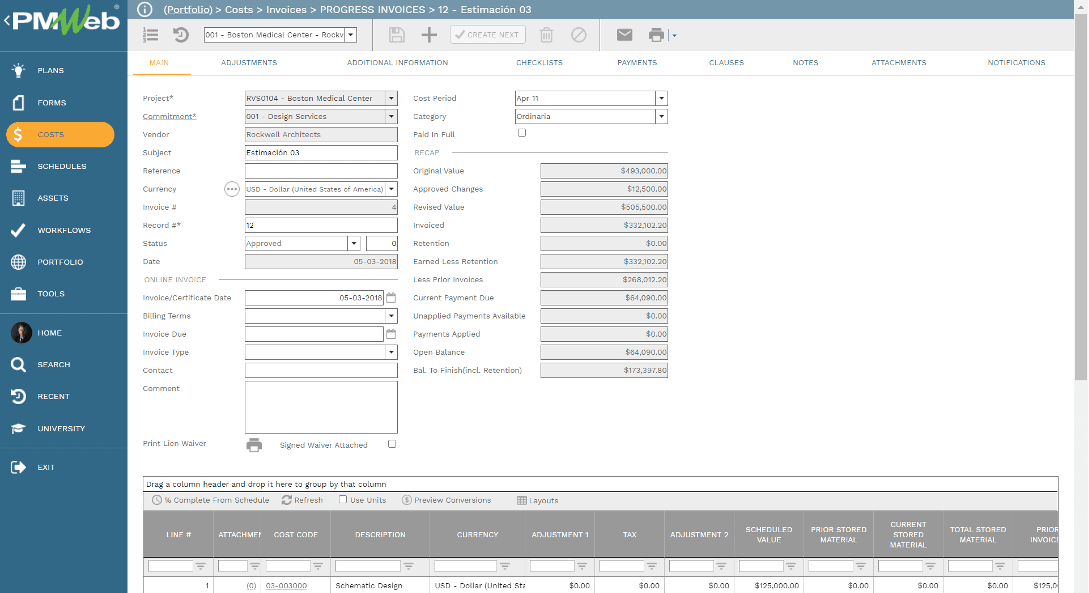
For any other indirect cost expenses occurred that was not part of original cost estimate, nor the approved budget or commitments for indirect cost, PMWeb miscellaneous invoices module will be used to capture the cost against its related cost breakdown structure (CBS) level.
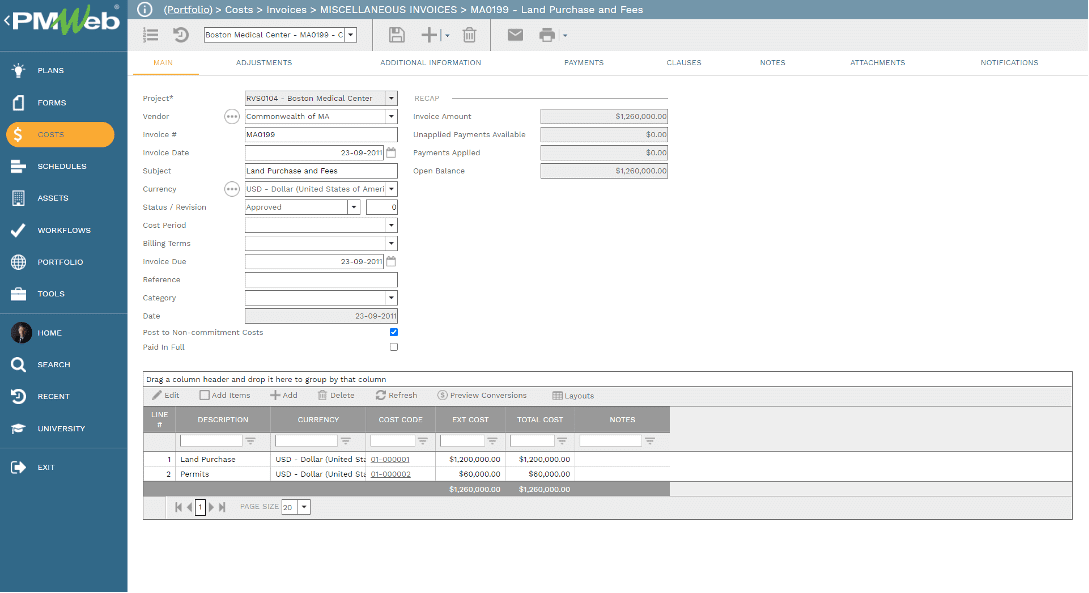
Another option for capturing indirect cost that was not part of a commitment is timesheets. Entities can use the PMWeb timesheet module to capture the actual cost of resources, labor, and equipment spent on the project. PMWeb allows defining regular pay, overtime pay, weekend pay, and another type of hourly actual cost rate for each resource to be reported on. PMWeb timesheet module allows each help to submit his/her timesheet each week or submit a single timesheet for all resources, labor, and equipment that each resource is responsible for. PMWeb same timesheet allows posting hours on different projects.
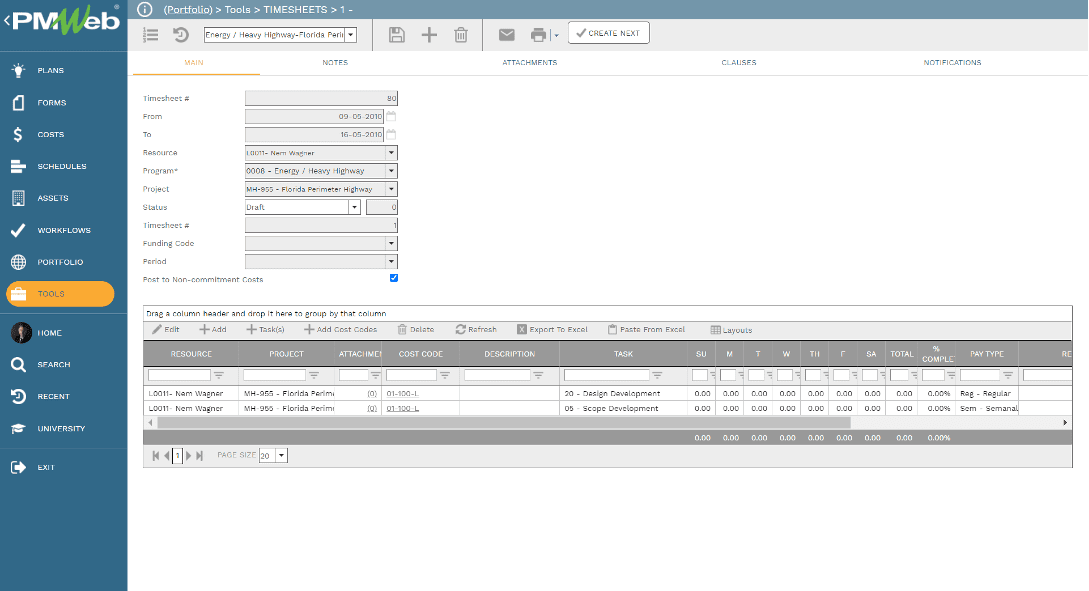
For each PMWeb record, including those for the indirect costs, the attachment tab will be used to attach all supportive documents required for the transaction or each process. It is highly recommended that all supporting documents be uploaded and stored on the PMWeb document repository. Besides, links to other transactions for the different project management can be added as well as links to imported MS Outlook emails.
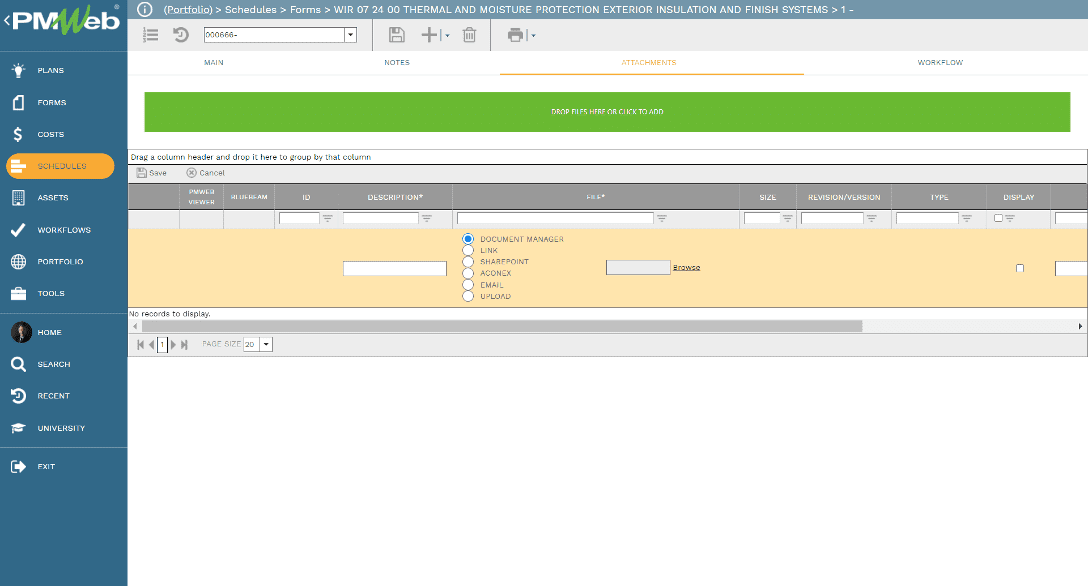
Similarly, a workflow will be assigned to each indirect cost process to map the sequence for each record’s review and approval tasks before its status becomes labeled as approved. This will enable assigning the role or project team member to each review task and its duration. Also, conditions can be added to each workflow to incorporate the approval authority levels associated with the workflow.
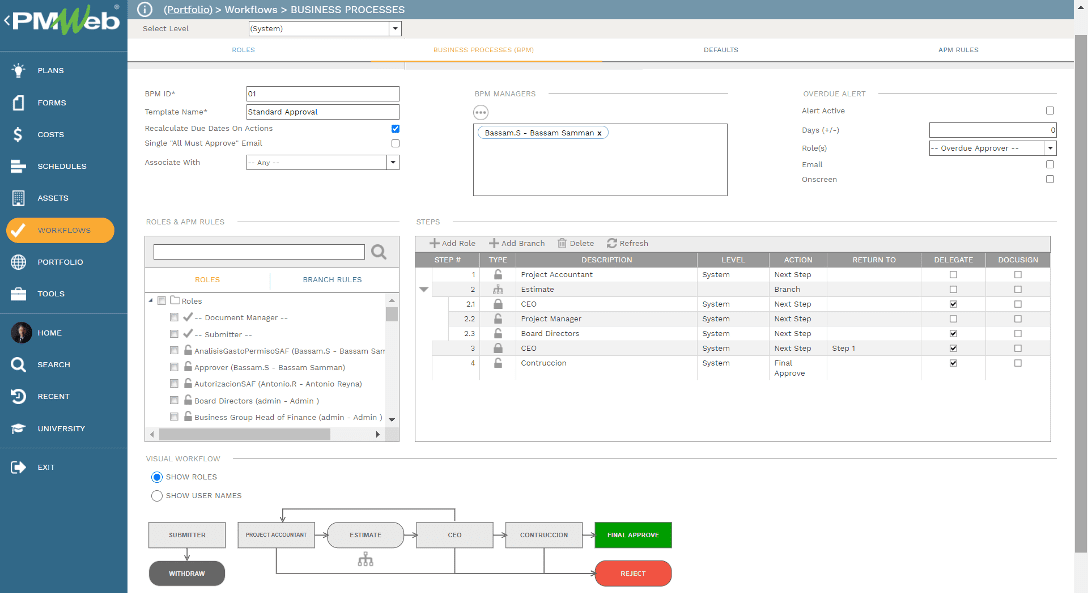
The captured indirect cost data from the different processes detailed above will provide the needed input for managing, monitoring, controlling, and reporting the indirect cost using earned value management method. The budget adjustments will give the budget at completion (BAC) and planned value (PV). The updated project schedule values for each period will be imported to PMWeb using the schedule link. This enables the earned value (EV) for each budget line item by multiplying the completion (BAC) budget with the linked project schedule activity percent complete value. The actual cost (AC) values will be captured from progress invoices, miscellaneous invoices, and timesheets.
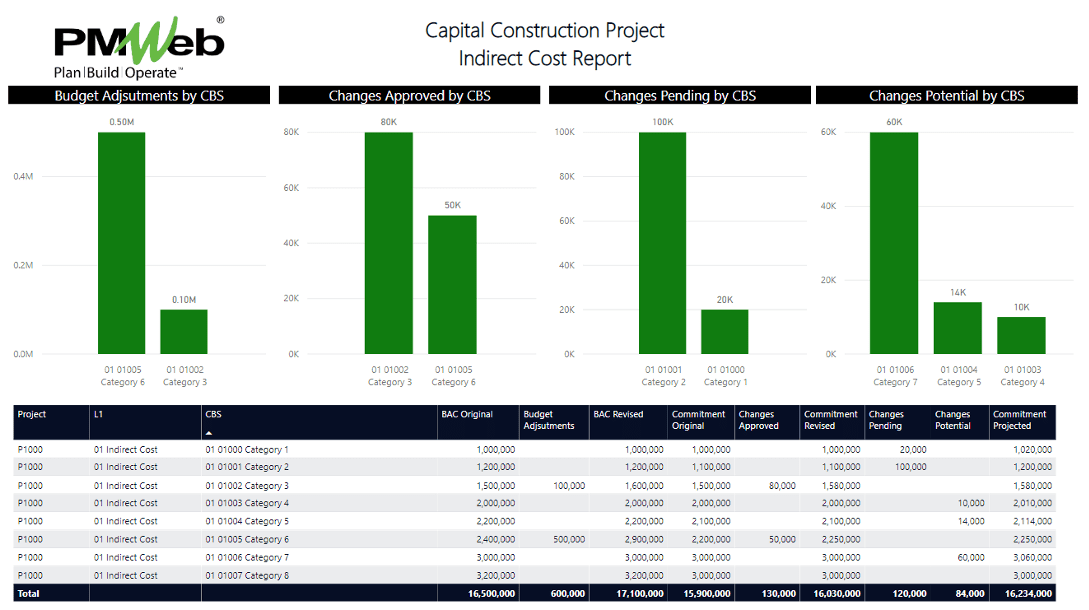
Those values will become the basis for calculating the earned value measures. Those include the schedule variance (SV), which is the difference between earned value (EV) and planned value (PV), cost variance (CV), which is the difference between earned value (EV) and actual cost (AC), schedule performance index (SPI) which is the division of earned value (EV) by and planned value (PV), cost performance index (CPI) which is the division of earned value (EV) by actual cost (AC), the estimate to complete (ETC) which is difference between budget at completion (BAC) and earned value (EV), estimated cost at completion (EAC) which is summing estimate to complete (ETC) and actual cost (AC), and finally the variance at completion (VAC) which the difference between budget at completion (BAC) and estimated cost at completion (EAC).
